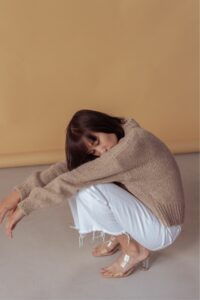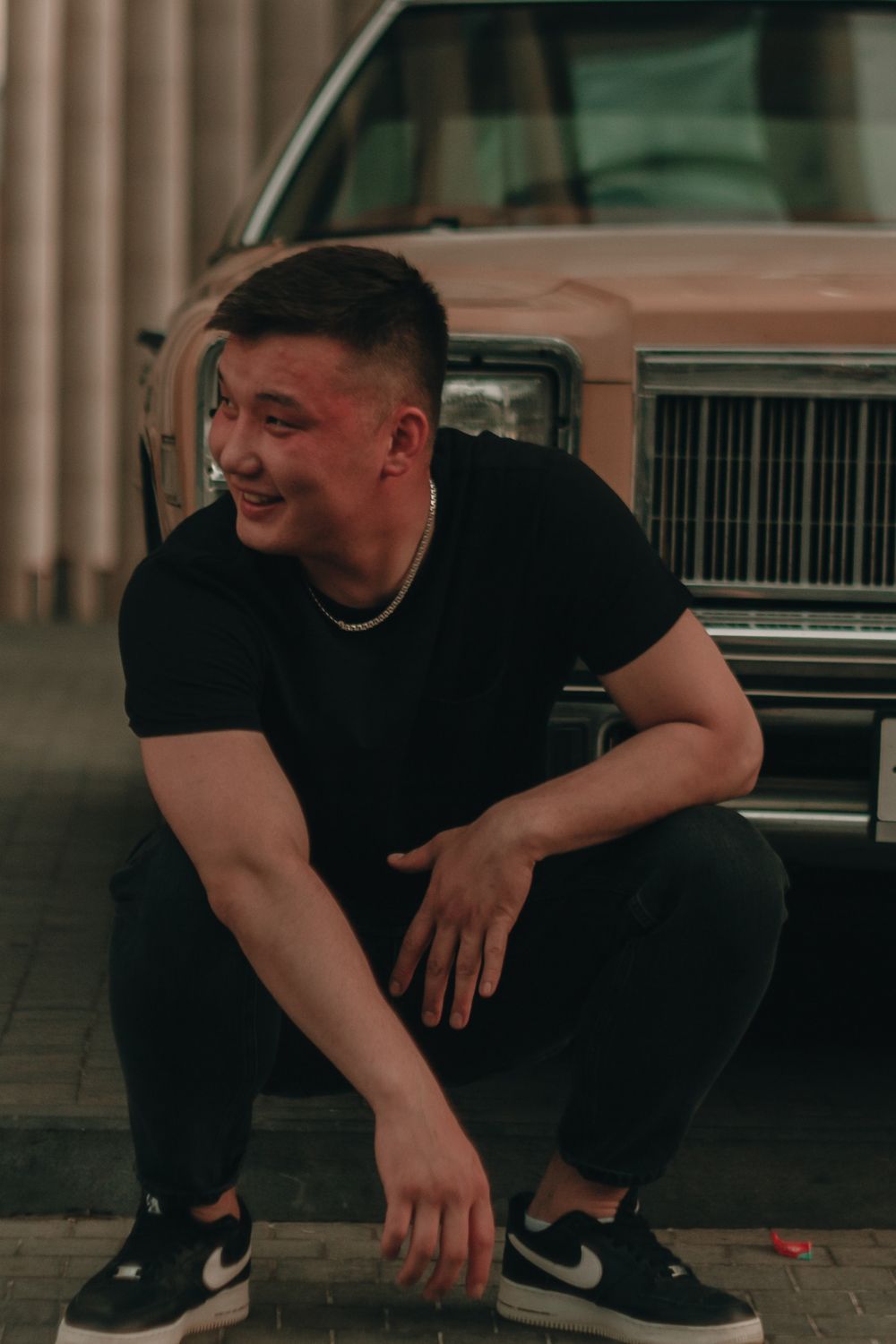The world is filled with diverse cultural practices that often leave us intrigued and fascinated.
One such practice that has piqued the curiosity of many is the Slavic tradition of squatting instead of sitting. Whether in casual conversations, social gatherings, or even public spaces, you may have noticed Slavic individuals effortlessly assuming a deep squat position.
This unique cultural phenomenon holds a rich tapestry of historical, practical, and social significance that goes far beyond a simple seating preference.
In this blog post, we’ll delve into the intriguing world of squatting among Slavs, unraveling the reasons behind this age-old tradition and shedding light on its enduring relevance in today’s modern world.
Join us on a journey to explore why Slavs squat instead of sitting and what this practice reveals about their culture and identity.
Exploring the Art of Squatting: Why Do Slavs Prefer it to Sitting?
The practice of squatting rather than sitting among some Slavic individuals, especially in informal settings, is a cultural phenomenon that has several historical, practical, and social reasons.
It’s important to note that this behavior is not exclusive to Slavs and can be observed in various cultures, but it’s often associated with Slavic countries. Here are some reasons why squatting is prevalent:
Historical and Cultural Roots: Squatting has deep historical roots in Slavic culture. In rural areas and villages, people often had low stools or no chairs at all.
Squatting was a comfortable and natural way to rest, work, or socialize, particularly in homes with limited furniture.
Practicality: Squatting can be more practical than sitting in certain situations.
For example, when working in gardens, around the house, or in outdoor settings, squatting allows individuals to maintain a low center of gravity and be more stable.
It also keeps their clothing cleaner, especially in muddy or dirty environments.
Social and Communal Aspect: Squatting is conducive to socializing. When people squat together, they are at eye level, making it easier to engage in conversations, share food, or play games. It fosters a sense of community and closeness among people.
Health Benefits: Squatting has been associated with some health benefits. It can improve flexibility and mobility, especially in the hips and knees.
It may also promote better posture and reduce the risk of certain musculoskeletal issues.
Cultural Identity: In some Slavic cultures, squatting has become a symbol of cultural identity.
It’s a way for people to connect with their heritage and traditions, even if they have access to chairs and modern furniture.
It’s also sometimes seen as a way to resist Westernization and maintain a sense of authenticity.
Economic Factors: In many post-Soviet countries and Eastern European nations, economic hardships have persisted for some time.
This has led to a lack of access to comfortable seating in public spaces or homes. Squatting is seen as an adaptation to this reality.
Fashion and Style: In some cases, squatting has become fashionable or trendy, particularly among young people. It’s seen as a way to make a statement or rebel against conventional norms.

It’s important to remember that squatting is not universal among all Slavic individuals, and its prevalence can vary by region, generation, and personal preference.
While it may have historical and cultural significance, not all Slavs engage in this practice, and many use chairs and other forms of seating in their daily lives, especially in more modern urban environments.
Further explanation here.
Firstly though, let’s delve deeper into the historical and practical reasons for squatting in Slavic culture:
Historical and Cultural Roots:
Limited Furniture: In many rural Slavic communities in the past, people did not have access to an abundance of furniture, such as chairs and tables.
Instead, they often used low stools, benches, or simply sat on the ground. In such settings, squatting naturally emerged as an alternative way to sit or rest comfortably without the need for chairs.
Traditional Living Spaces: Traditional Slavic homes, especially in rural areas, had small and compact living spaces. These homes often consisted of a single room where various activities took place, from eating to sleeping to socializing. Squatting provided an efficient way to utilize the limited floor space for different purposes.
Practicality:
Low Center of Gravity: When working in gardens, farming, or engaging in tasks that require stability and balance, squatting offers a lower center of gravity compared to sitting on a chair. This lower center of gravity can make it easier to perform physical tasks, such as planting crops or working with tools, while maintaining balance.
Cleanliness: Squatting can help keep clothing cleaner, particularly in muddy or dirty outdoor environments. By squatting, individuals can keep their bodies elevated above the ground and reduce the risk of their clothes coming into contact with dirt or moisture.
In other words, the historical and practical reasons for squatting in Slavic culture are deeply rooted in the historical living conditions and the practical needs of people in rural areas.
Squatting emerged as a natural way to sit or work when furniture was limited, and it continues to be practiced in various settings where it offers advantages in terms of stability and cleanliness, especially in outdoor or rural environments.
let’s explore the social and health aspects of squatting in more detail:
Social and Communal Aspect:
Eye Level Interaction: When people squat together, they are at eye level with one another. This facilitates more intimate and direct communication. Unlike sitting on chairs, where individuals might be at different heights, squatting creates a level playing field, making it easier for people to establish eye contact and engage in meaningful conversations.
Sharing and Bonding: Squatting often occurs in informal or communal settings, such as family gatherings, picnics, or social events.
This posture encourages people to sit closer together, making it convenient to share food, drinks, or snacks. The act of sharing food while squatting can strengthen social bonds and create a sense of togetherness.
Play and Recreation: Squatting is versatile and allows for easy transitions between sitting and standing.
This flexibility is advantageous when engaging in activities like playing games or watching performances. People can quickly stand up to participate and then squat back down to relax, creating a dynamic and inclusive atmosphere.
Health Benefits:
Improved Flexibility and Mobility: Squatting involves bending the hips and knees to a deep degree.

Regularly practicing this movement can help improve flexibility and mobility in these joints.
Over time, it can increase range of motion and make activities that require squatting, such as gardening or picking up objects from the ground, easier and less strenuous.
Postural Benefits: Squatting encourages a more upright posture compared to slouching in a chair.
Maintaining an upright position during squatting can promote better spinal alignment and strengthen the muscles that support the spine. This may contribute to improved overall posture, reducing the risk of developing posture-related issues.
Reduced Musculoskeletal Issues: Sitting in chairs for extended periods can sometimes lead to musculoskeletal problems, such as lower back pain or tight hip flexors.
Squatting, on the other hand, engages various muscle groups and helps distribute the load more evenly. This can potentially reduce the risk of developing these issues.
In essese, squatting not only fosters a sense of community and closeness among individuals but also offers potential health benefits, including improved flexibility, better posture, and a reduced risk of musculoskeletal problems.
These factors contribute to the enduring popularity of squatting in various social and physical contexts in Slavic cultures and beyond.
Let’s delve deeper into the cultural, economic, and fashion-related aspects of squatting in Slavic cultures:
Cultural Identity:
Connection to Heritage: Squatting has strong ties to the cultural heritage of some Slavic communities.
It represents a connection to a time when traditional living conditions prevailed and serves as a reminder of the customs and lifestyles of previous generations.
Preservation of Traditions: As modernization and Westernization have influenced lifestyle choices, squatting has become a way for some individuals to hold onto their cultural roots and preserve traditions that have been passed down through generations.
It symbolizes a commitment to maintaining the authenticity of their cultural identity.
Economic Factors:
Scarcity of Comfortable Seating: In many post-Soviet and Eastern European countries, economic challenges have persisted, leading to limited resources and infrastructure in public spaces and homes. As a result, comfortable seating options like chairs may not always be readily available or affordable.
Adaptation to Economic Realities: Squatting can be seen as an adaptation to economic constraints. When chairs or other seating options are scarce, people naturally turn to squatting as a practical and cost-effective way to rest or socialize. It allows them to comfortably enjoy communal activities without the need for expensive furniture.
Fashion and Style:
Statement and Rebellion: In some cases, squatting has evolved into a fashion statement and a form of cultural rebellion, especially among younger generations.
Choosing to squat instead of sitting in chairs can be seen as a way to reject conventional norms and embrace a more unconventional or countercultural lifestyle.
Trendiness: Squatting has gained popularity in certain fashion and subculture circles. It’s often associated with an alternative or anti-establishment aesthetic. Young people may adopt squatting as a trend to express their individuality and non-conformity.
In all this is that, squatting in Slavic cultures carries cultural, economic, and fashion-related significance.

It symbolizes a connection to heritage, acts as an adaptation to economic realities, and can be a form of cultural rebellion or fashion statement.
These factors contribute to the enduring practice of squatting in various Slavic communities and its evolving role in contemporary culture.
A tabular on this topic here
Here’s a tabular presentation summarizing why Slavs often squat deeply instead of sitting:
| Reason for Deep Squatting | Explanation |
|---|---|
| Historical and Cultural Roots | – In traditional Slavic culture, limited furniture, such as low stools or benches, encouraged squatting as a natural way to sit or rest. Squatting was practical in homes with limited furniture. |
| Practicality | – Deep squatting provides stability and a low center of gravity, making it practical for various tasks like working in gardens or on the farm. – It helps keep clothing cleaner in muddy or dirty outdoor settings. |
| Social and Communal Aspect | – Deep squatting allows individuals to be at eye level when socializing, making conversations more engaging and fostering a sense of community. – It facilitates sharing food, drinks, and playing games in close proximity. |
| Health Benefits | – Deep squatting can improve flexibility and mobility in the hips and knees. – It promotes better posture by engaging core muscles and reducing the risk of musculoskeletal issues. |
| Cultural Identity | – Deep squatting can symbolize a connection to Slavic heritage and traditions, even in the presence of modern furniture. – It represents a commitment to preserving cultural authenticity. |
| Economic Factors | – In economically challenged regions, a lack of access to comfortable seating has led to the adoption of deep squatting as a practical alternative. |
| Fashion and Style | – Among some individuals, deep squatting has become fashionable and trendy, serving as a form of cultural rebellion and a statement of non-conformity. |
This table provides a concise overview of the various reasons why deep squatting is prevalent among Slavic individuals, highlighting its historical, practical, social, health-related, cultural, economic, and fashion-related aspects.
My concise conclusion on this topic here: Why do Slavs deep-squat instead of sitting?
In conclusion, the practice of deep squatting among Slavs is a multifaceted cultural phenomenon deeply rooted in historical traditions and practicality.
It fosters social bonds and offers potential health benefits, all while serving as a symbol of cultural identity.
Additionally, economic constraints and evolving fashion trends have contributed to its enduring relevance in Slavic communities.
Deep squatting, far from a simple seating preference, embodies a complex interplay of historical, social, and cultural factors in Slavic societies.

Hey there, it’s Mike Rrsq, the Editor-in-Chief over at Jsquat.com, and I’m absolutely obsessed with all things squat fitness! I’ve been lucky enough to get some serious recognition for my work in this field. With a solid background in the fitness and wellness industry, I’ve been there right from the get-go, helping shape this website into what it is today.
You see, I’m not just the boss around here; I’m also a passionate contributor. I love sharing my insights through my articles, and trust me, they’re not your run-of-the-mill stuff. Each piece I write is a labor of love, filled with my expertise and real-world experience in the fitness universe. So, if you’re into fitness and looking for some inspiration, you’re in the right place!

